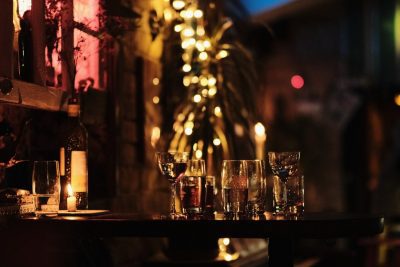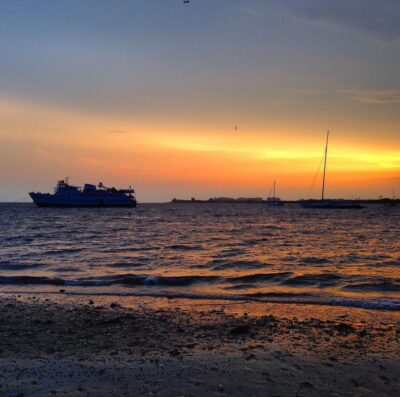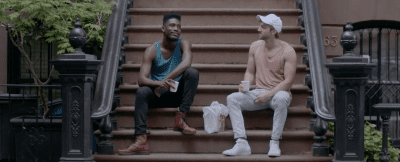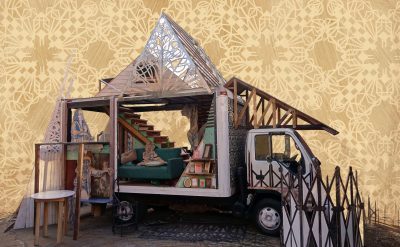Illustration by Joe Lillington
The brilliant, not-so-secret reason some Brooklyn balconies are staggered
Beyond looking cool, Williamsburg’s zig-zagged balconies play an important role in Hasidic culture
It’s hard to miss: Each fall, locals descend upon Lee Avenue, closed to traffic, to peruse stalls selling lulavs and etrogs—plants and fruits that symbolize the arrival of Sukkot, the eight-day Jewish holiday celebrating the harvest and the exodus from Israel.
Look up and you might notice a number of buildings adorned with curious-looking staggered balconies that zig and zag down austere apartment facades. On those balconies, “sukkahs” are built: huts that Jews traditionally spend time in during the holiday. According to Jewish law, for a sukkah to be considered kosher, it must—among other things—have a roof that is open to the sky. But building owners have found a way to cater to a very specific need for a very specific set of customers: by zig-zagging their balconies, Hasidic Jews can build kosher sukkahs with roofs unobstructed by other balconies above them.
“It’s a Hasidic thing, but a hard-core Hasidic one,” explains Frieda Vizel, the founder of Tours by Frieda, a sightseeing agency that provides tours of Hasidic Brooklyn. “You don’t really see this happen in the Chabad community in Crown Heights, for example. They will put a sukkah on the sidewalk there and everyone will share it.”
In Brooklyn, you can find buildings with these particular outcroppings as you stroll west from Bedford Avenue and 8th Street in Williamsburg. You can also spot them in Borough Park and Kiryas Joel in Orange County, New York.
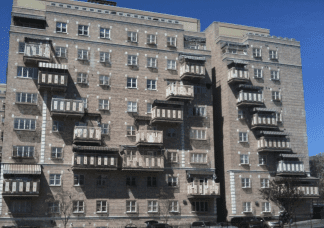 Hasidic by design
Hasidic by design
“When we design buildings, we know the developers are erecting them for the Hasidic community, so they typically ask us to design them with that in mind,” says Mark Weinberger, a Hasidic Jew and architect who has worked on some of these buildings. “Given that the holiday of Sukkot requires the use of huts that are open to the sky, any Hasidic Jew that wants to buy an apartment is looking for one that allows them to fulfill that need.”
Still, even though buildings with these balconies are sought after by the Hasidim, the structures don’t necessarily increase the value of the homes. As Vizel explains, “these apartments have a very narrow client demographic who is willing to buy them. It makes them by default actually not more expensive than other [homes]. They’re amenities for Hasidim but only Hasidim.”
Weinberger is quick to mention that buildings with on-the-surface similar outdoor spaces can be found around other New York neighborhoods as well, erected by firms like ODA and JFA. Those, however, target a more “hipster” buyer. “They feature pixelated cubes that are set back across facades and are more about the visual aesthetic of a property than its function,” he explains. Examples include the stepped terraces at 251 1st Street in Gowanus and the Rheingold complex in Bushwick.
Peppered across Hasidic Williamsburg are also older brownstones that feature modern balcony additions tacked on to address the same need. “If you go to the older part of Williamsburg, there are a lot of beautiful brownstones that look like Fort Greene and Park Slope, but what is actually striking about them is that they have added-on balconies in the front,” says Vizel. “You can see they are modern renovations, they weren’t there before the Hasidim came.”
Beyond special ceremonial celebrations, the relatively large sizes of families in the community also influence the design and layout of the orthodox home. “Hasidic Jews are looking for apartments that are designed very differently,” says Weinberger. “They are usually larger, with loads of bedrooms and a big focus on the kitchen and the dining room.”
Although built with function in mind, the outcroppings—visually striking especially when adorned with interesting-looking huts—also add character and flavor to the town. “I have been here a few years and I’m always impressed at how early the sukkahs come up,” says Rabbi Ben Greenfield of modern Orthodox synagogue Greenpoint Shul, who advises his congregation to head to Lee Avenue each fall. “It feels like we’re in Jerusalem!”
You might also like 

















